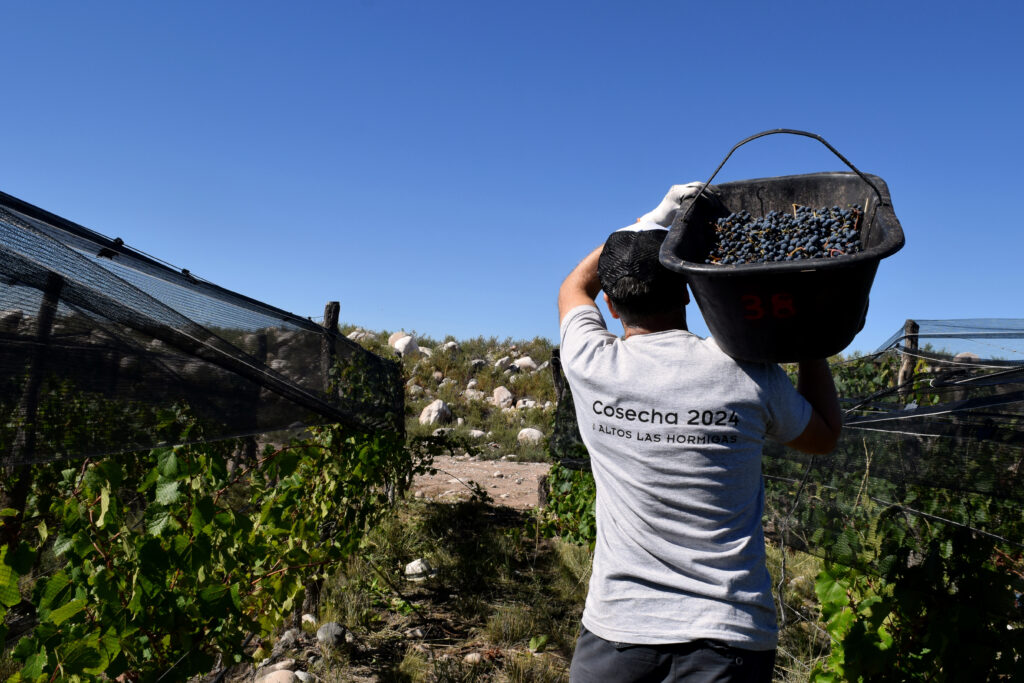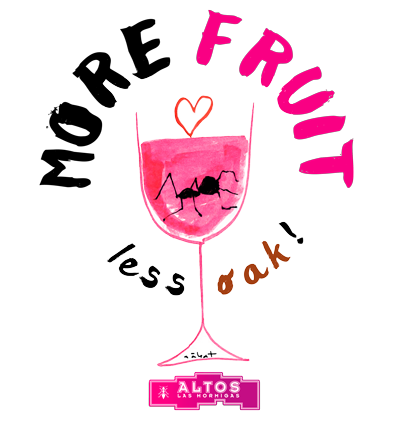Terroir is not a static context; it is a constant, complex motion. As one of its components moves, even slightly, it sets off a chain reaction that markedly affects the character of the vintage. And people, the interpreters of Terroir, are no strangers to this dynamic.
The 2024 vintage was undoubtedly a very special one.
If our past makes us who we are, how we bounce back when we fall may be one of the best ways to measure accomplishment.
In November 2022, vines in Mendoza suffered one of the worst frosts on record. Our team’s work was fundamental in helping our vineyard recover and the plants rebuild so they could bounce back and show their potential.
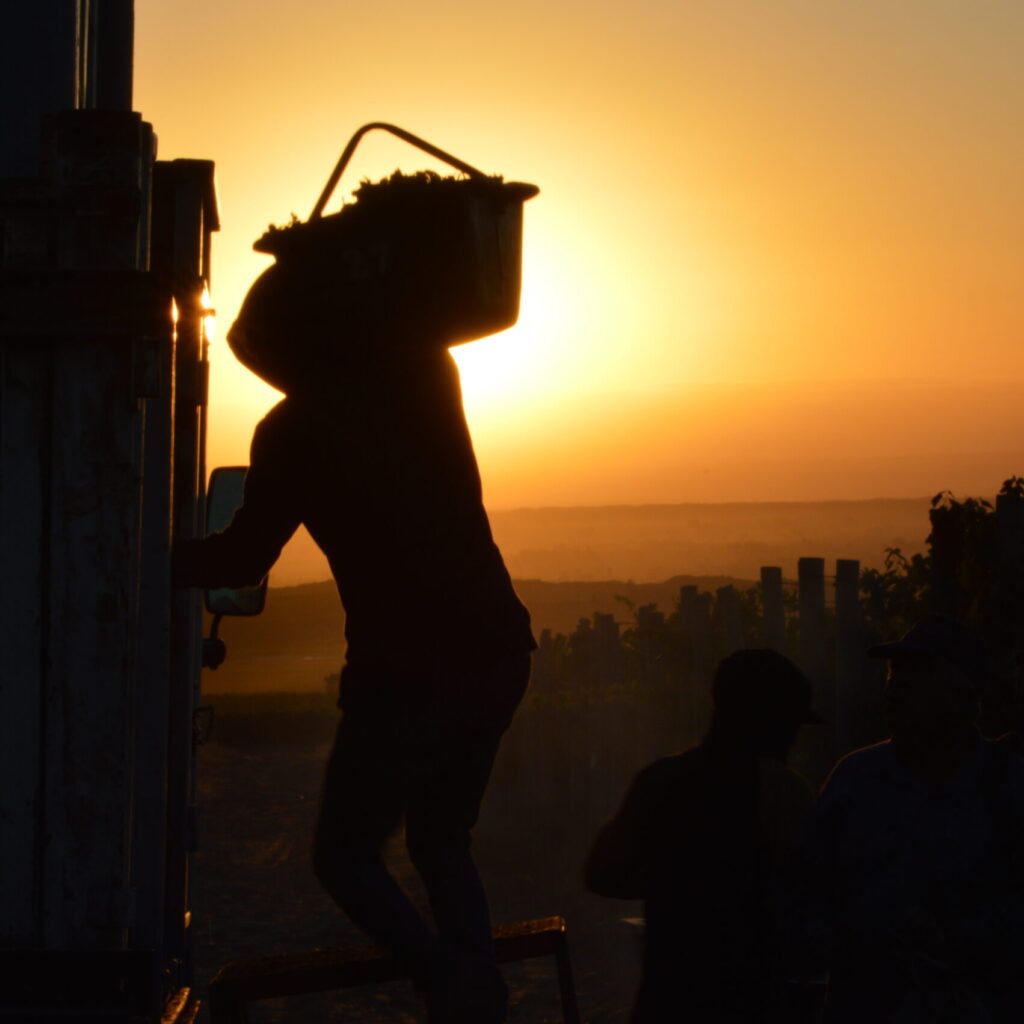
The season started with colder-than-average temperatures. Spring developed with many extreme bursts of weather, amassing snow in altitude and producing dry-hot Zonda events in the valley, followed by extreme drops in temperature. It was a year with plenty of snow on the mountains and water flowing in Mendoza’s rivers.
“I haven’t seen water flowing in the Mendoza River since I was a child… the sound of the stones moving and the water’s thawing color make you imagine what it was like thousands of years ago, when it formed the soils of our region.”
Federico Gambetta
But nature has a balance and as it gives, it takes away. The Zonda wind caused many problems in the higher areas, disrupting flowering and hindering the development of sectors of the canopies in the highest vineyards of Gualtallary. This would later lead to lower yields.
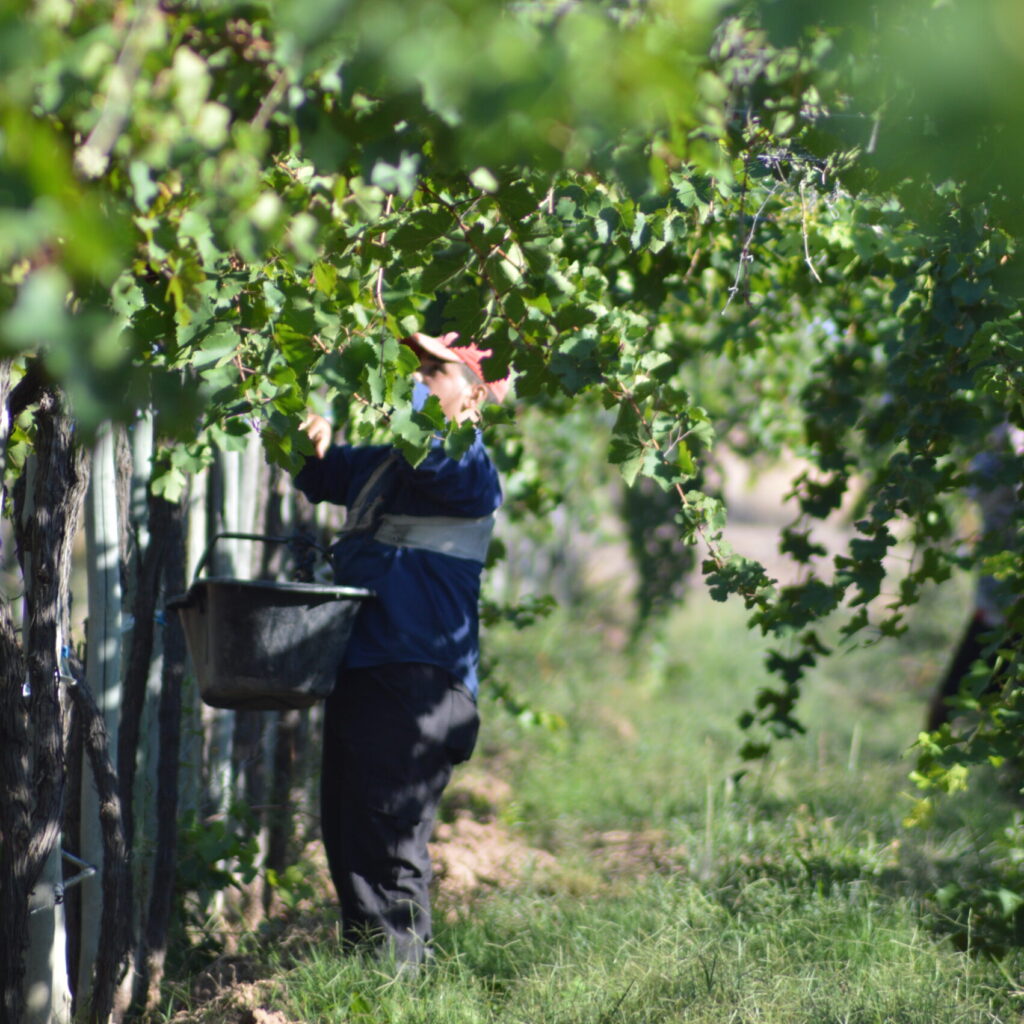
When does the growing season really begin? From which moment does the climate have a real and direct impact on the wines of the coming vintage? We could say that in the first part of the season, some broad elements are set: yields, the arrangement of the clusters, the structure of the leaves that will support the final ripening, and the extension of the canopy, much needed to sustain the summer heat and keep a balanced acidity. This part of the season spans from September to December.
In January, along with the veraison and the first part of berry growth, the formation of tannins begins (which explains the vintage effect in most cases) this is the phase in which details of the vintage are defined and any climatic occurrence has a direct impact on the coming wine. During this phase, the season has shown its typical high desert variability.
The early part of the season was cool and full of promise. Ripening began slowly, with a slight delay in the Uco Valley, but later the scene was upset, a heat wave arrived and lasted until the end of the month marking the vintage with its thermal range and its top high and low temperatures. In January, the range was narrow, hot during the day and not cold enough at night for the plant to recover. The ripening process accelerated. Then once again, nature showed its resilience.
When the vine is under stress, as under high temperatures, it closes its pores (stomata, from where it breathes). As its respiration stops, the production of sugar and the consumption of acidity are paused. To the simple observation and to analytical data in the lab, it looks like the plant is moving very slowly, but it is like the calm before the storm.
At the slightest stimulus, all the energy that has been building up is suddenly released. The sugar increases rapidly and the acidity begins to drop in the same way. The rains arrived, and that was the expected trigger. February had just begun.
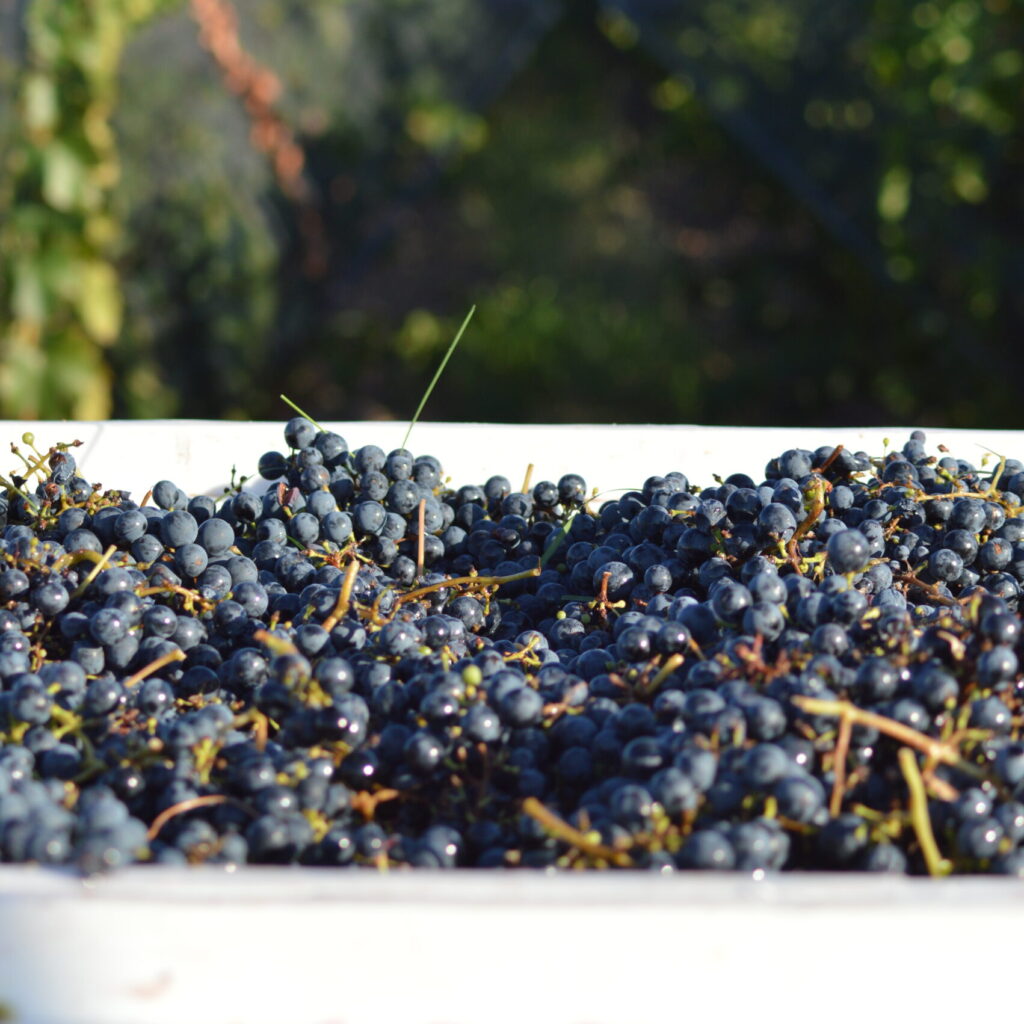
At this point, we decided to start harvest for our Malbec from Lujan de Cuyo. We proceeded carefully because we saw something unusual in the grapes: the seeds did not separate from the pulp and maintained high acidity even when the sugar levels were at their optimum. Therefore, our progress in the harvest was like a game of squares, one step at a time, with the decision about the right moment to harvest always in the balance because the different maturity factors were in asymmetric sync.
All the weather forecasts pointed to an “El Niño” year, and humidity was the threat. It did rain in February but within average patterns for most areas. In Lujan de Cuyo, we made good progress with the harvest, and the parameters allowed us to have the lowest pH from this vineyard in a long time, resulting in fresh wines, with tension, energy, red fruit, herbal notes and finesse.
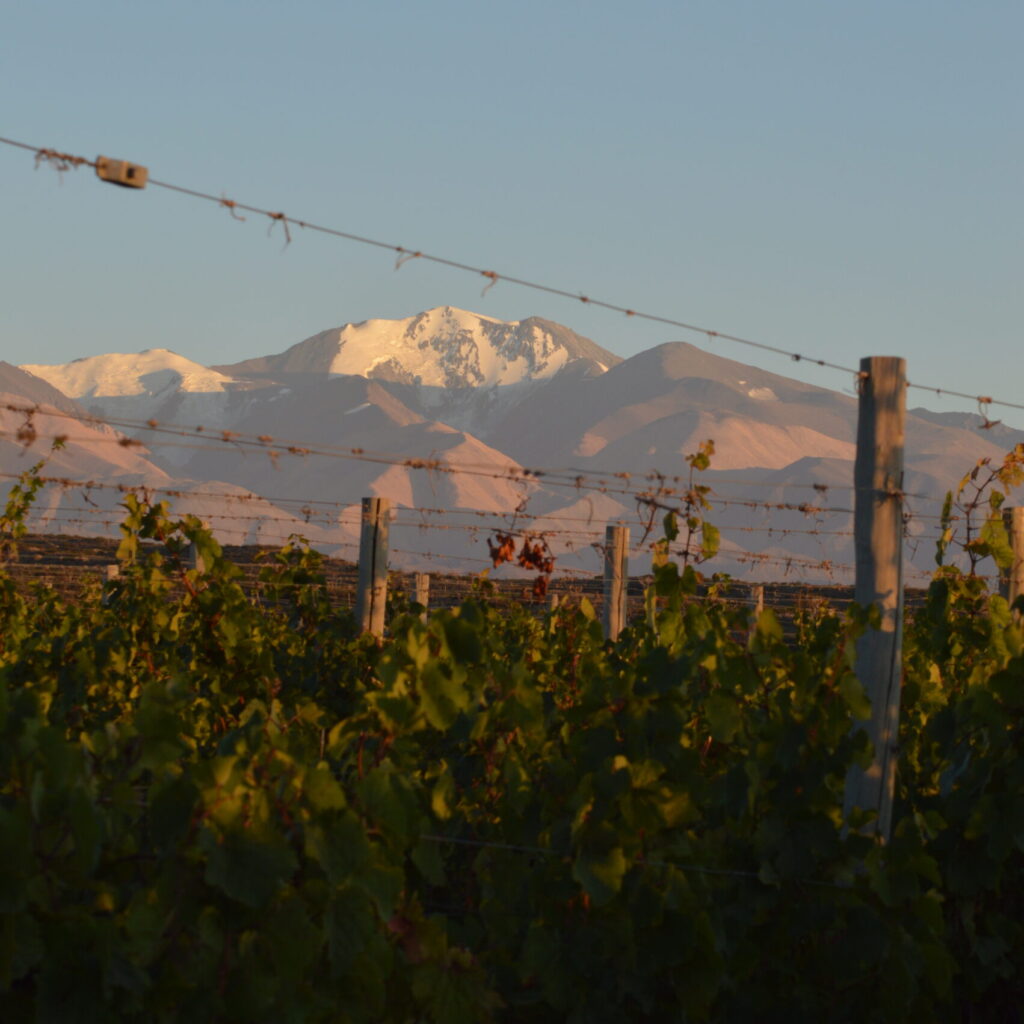
The situation in the Uco Valley was similar, with the expected delay in comparison to Lujan de Cuyo – due to its proximity to the mountains. It was a key year for our Jardin de Hormigas vineyard, as we were coming off a severe frost year. We modified the pruning method, and the viticulture team was loaded with a renewed energy.
We shall now return to the subject of the parameters that define a vintage as warm or cool, wet or dry. The Valle de Uco pattern during most of February was similar to that of Lujan de Cuyo. The berries increased their sugar content, but the pulp did not separate from the seeds. In Jardin de Hormigas there was more rain than in previous seasons (which is unusual for Paraje Altamira), but it did not produce any undesired effect, just pushing back the harvest date by a few days. The weather cooled down in the last 15 days before the harvest, giving us the ripening progress that we wanted, we were able to pick with precision, holding on to the acidity and getting the polyphenols ripeness where we needed. In this setting, characters that we usually associate with a cold vintage developed in a generally warm season: good tension, freshness, blue fruit, and finesse: energy. But we knew it was only a matter of time before the ripeness accelerated again, so we moved on.
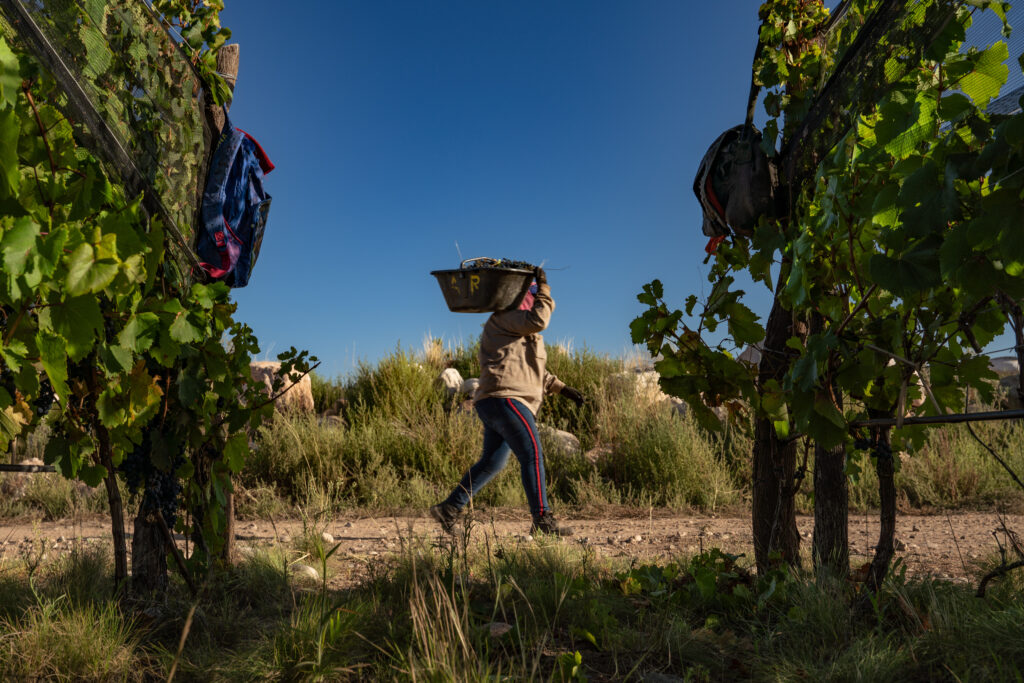
The harvest at Jardin de Hormigas began in the first days of March.
We made slow progress. We took repeated maturity readings in the vineyard because, in years after a frost, the split of the values is quite usual. We continuously walked the property to determine, plot by plot as precisely as possible, the right moment of picking to get the wines we dreamed of.
Following our established scheme, we started with the less fertile soils, those with a higher percentage of pebbles. These are plots used for the Reserva or Appellation Paraje Altamira. It was a vintage to use the whole bunch. The stems were rich, juicy and with great texture.
The time was coming and we watched closely our coveted plot 15, Los Amantes. Meanwhile, the plots with slightly deeper soils were beginning to reach their optimum point. Meteora grapes entered the winery and the sensations of the team were at a very high level, you could feel the chalk on the grapes. When the grapes taste good, the wine will be good! What we never imagined is that we would be able to feel the wine in the berries in the days right before the harvest. We could feel the Malbec as the right vehicle to reveal this place, our vineyard: a garden.
Los Amantes plot this year had something special in store for all of us. It showed the resilience of nature and how a team, with its drive, can lead the course of things.
We tasted the grapes every day for 10 days. With ups and downs, and some rain in between. We were obsessing, waiting for the right moment, looking for that taste in the grapes that would strike us and make us dream of the coming wine. It is a vision that we start over at the beginning of each harvest. We tasted the grapes again and again, something was always missing, and we couldn’t quite pin down what it was.
We will not forget that day: the whole team was there, the sky had just cleared and the sunset had tinged the vineyard with gold. We tasted different areas of the plot and there was no need to comment, we all had the same feeling: the time was right! In a way Los Amantes had told us that it was ready: “Come and get me!”. This is one of the special moments in which we truly feel that we are a part of Terroir, not the center of it, but the connecting node between a powerful vineyard site and the wine that will one day be in the bottle.
The harvest was slowly coming to an end.
The grapes from Gualtallary also arrived at the winery, with floral and mountain characters. And so did the rest of the grapes from Jardin de Hormigas, with deeper lime soils. All the fermentations took place with great dynamics. The ripening of the grapes of our neighbors went on while we had already completed our harvest. All the grapes were in the winery.
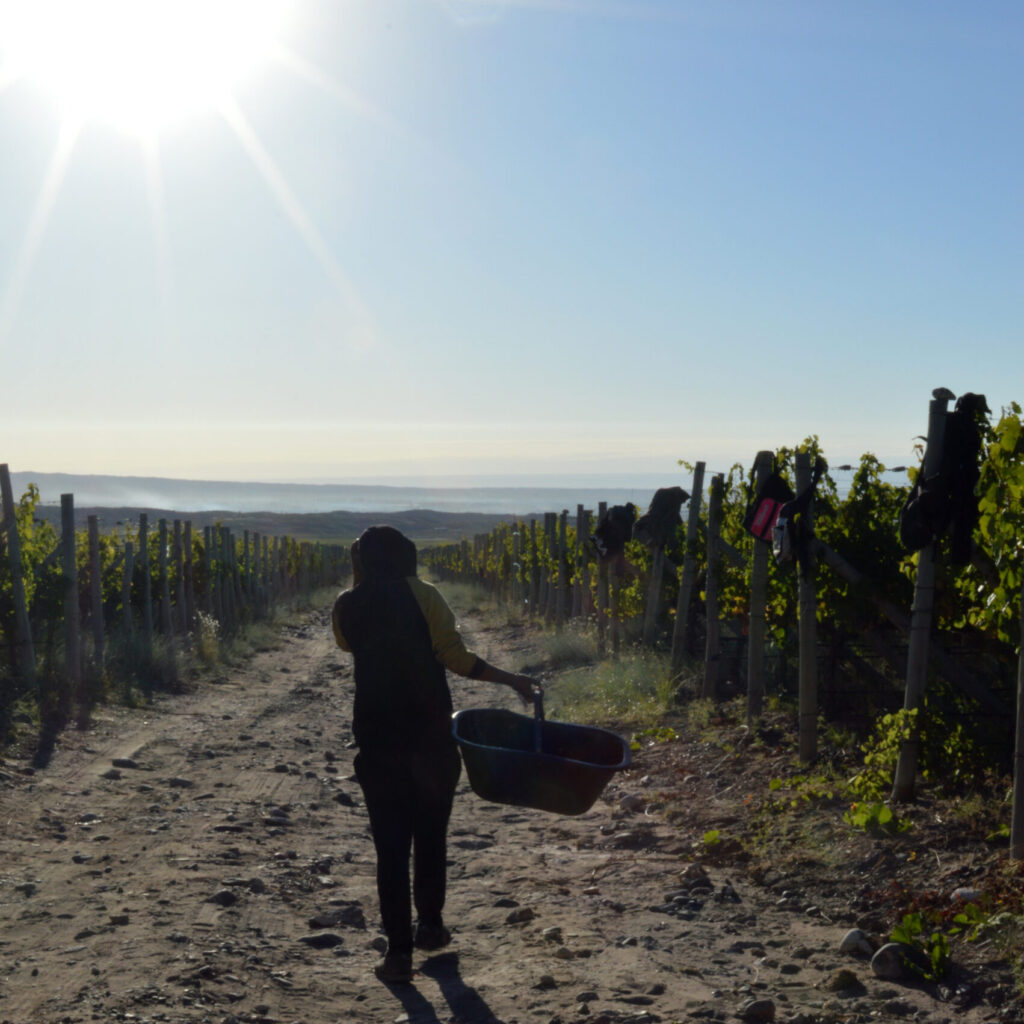
2024 was a warm vintage with the expression potential of a cool vintage. The right elevage will be essential to bring out tension and texture and, once again, humans will be crucial to express this Terroir in the best warm vintage in recent years and bring it to the bottle.

